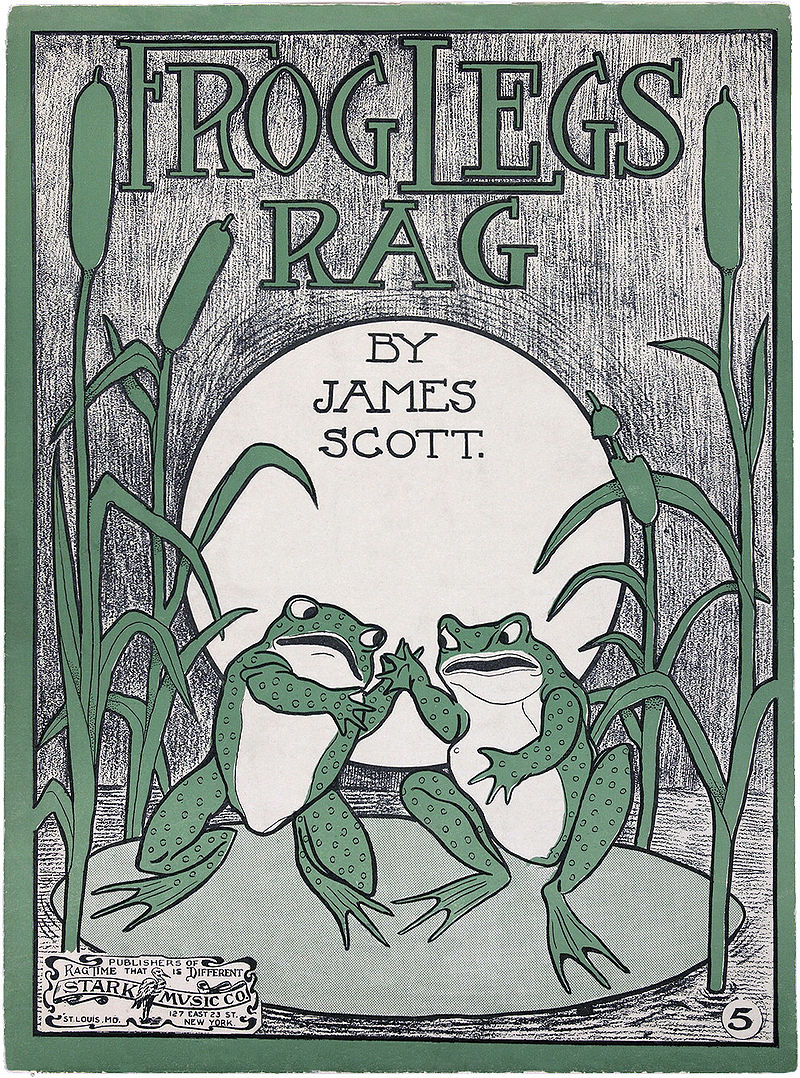
Listening Activity: James Scott "Frog's Legs Rag"
Listen to James Scott's " Frog's Legs Rag ," and while listening, view the score. Notice that the structure of this work-AABBA Transition CC-known as the trio; DD-is similar to Scott Joplin's "Maple Leaf Rag ," except the trio section "C" is in the dominant key of A-flat major and not the subdominant key of G-flat.
| The Inside Scoop from Bill Edwards on James Scott's "Frog's Leg Rag" | ||
|---|---|---|
| Structural Form/Pattern: AABBA- transition-trio section CC-DD | ||
|
While not Scott's first rag, it was the first of his to be published by John Stark, who would issue almost everything Scott sent him for pretty much the rest of Stark's life. And like a frog's legs might do, this piece just "jumps" right into the A section with no introduction. The B section is the most fun for me to improvise on and has some similarities to the "Maple Leaf Rag" B section. Those who are more familiar with this piece know that, unlike most rags, the printed score modulates up a fifth (from Db to Ab) for the trio as opposed to the traditional interval of a fourth (Db to Gb). This was likely due to Stark's reticence to print something in six flats, which creates at the very least the perception on the page of being extremely difficult to play, rather than a conscious composition decision on the part of Scott. With that in mind, I learned the C and D sections in the "original" key, and they aren't that difficult when transposed. The D section is made up largely of "ring shout" or call-and-response patterns, where an echoing figure is played in a different octave. "Frog Legs" is absolutely delicious (Edwards n.d.). |
||
Listening Activity: Joseph Lamb "Ragtime Nightingale"
Listen to two versions of Joseph Lamb's "Ragtime Nightingale" (1914).
Version 1: Ragtime Nightingale
Version 2: Ragtime Nightingale
The form of this work is AABBACC-transition-B. Notice the similarity in the structural layout to Joplin's and Scott's rags, except that the transition is in a different place.
| The Inside Scoop from Bill Edwards on Joseph Lamb's "Ragtime Nightingale" | ||
|---|---|---|
| Structural Form/Pattern: AABBA trio section CC- transition-B | ||
|
In a 1959 interview, Lamb recounted how his lyrical "Nightingale Rag" came to be. He had wanted to write something similar to James Scott's " Ragtime Oriole ," and had been looking through his sister's Etude magazine, when he saw Chopin's Revolutionary Etude (a portion of which is included in the introduction of this performance) with an intriguing bass line. Working with this bass line he formed the A section, and then added a snippet of the famous "Nightingale Song," and a rag was born. Lamb was very attentive to detail in his work, which was clear even when he played in his last years; carefully and deliberately. Many consider this to be his finest work (Edwards n.d.). |
||







